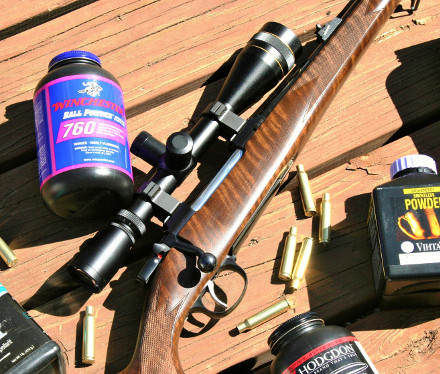
With an almost identical birth date as the 7×57, the 6.5×55 cartridge must also have a lot going for it to still be around over 100 years later. Ken Kempa takes a look at a hunting cartridge popular in Europe, which also has a loyal following in America. Very low recoil and legendary penetration adds up to the 6.5×55 being a proven performer in the field.
About twenty years ago, I ran across a brand-new Swedish Model 1938, caliber 6.5×55, at a Montana gun show. I paid less than $100 for it and was not too excited about my deal as it still was packed in the original heavy grease. After hours and hours of scrubbing and cleaning, I finally got to the point where it seemed shootable. All of my work had revealed a truly mint condition firearm- there was not a dent in the stock anywhere, or even a speck of rust. This rifle truly gave the appearance of never having been shot. A free box of surplus ammo helped to close the deal, so off I headed to the range to test fire an almost 50-year old rifle which had never spoken. Setting up my chronograph, I was terribly disappointed with readings just barely faster than a 30-30 lever gun. I was delighted when I sold that rifle off the next week, realizing a hefty $25 dollar profit. Of course, there is no need to say that I was not too “gun savvy” back then. Now, looking back, that certainly was not one of my best gun selling decisions. Something still around after over 100 years of service surely could tell me a thing or two about delivering solid performance. I know much better now and felt an obligation to give a grand old cartridge a test that it surely deserves.
Chapter 1: The Test Rifle
Click for LOAD DATA SHEET
For this article, I chose a CZ 550 full stock carbine, as it represented what a traditional rifle in the 6.5×55 should look like. No fancy synthetic stock, not even a tiny piece of plastic anywhere to be found. I was pleasantly surprised when I opened the box and found a traditionally styled European stock, while darker than I personally prefer, exhibited tiger-striping completely through from the muzzle cap to the recoil pad. All in all, a very handsome rifle that looked like it should be in the field. Only steel and wood, as many traditional hunters feel a hunting rifle should...
be.
The set trigger offered an acceptable pull weight in its standard operation and an even nicer set trigger mode with about a half-kilo pull. The supplied steel rings with integral mounts securely held my chosen Leupold 6-18 power, Vari-X II scope, with target knobs. This setup served me very well during the firing of hundreds of rounds, also enabling me to clearly see my shots and make rapid and accurate point of impact adjustments. For hunting, I would, of course, choose a more traditional scope.
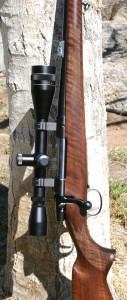
Lapua provided me with new brass for my testing, and I used a Hornady full length die set to assemble all rounds on my Hornady Lock-N-Load Classic single stage press. Only Federal 210 Large Rifle Match primers were used with all tested powders. All charges were dropped and weighed using my RCBS ChargeMaster Combo powder dispensing system. QuickLOAD, as well as current reloading manuals, helped me to establish safe working loads.
Chapter 2: Reloading Components Tested
In total, twelve powders were tested in the 6.5×55, along with nine different bullets. I had also assembled a broad selection of match grade bullets since the cartridge has a proven track record in competition. Accuracy testing early on showed that, while this was a suitably accurate hunting rifle, it was not a match-grade weapon, so trying to evaluate target loads would not make sense.
Powders tested included: Accurate 5744, Winchester 760, IMR 4198, 4895, and 4350, Hodgdon 4198, 4895, BL-C2, 4350, and 4831SC, and Vihtavuori N550, and 560. Bullets were assembled from Barnes- the new 120-grain TTSX and 130 TSX, Hornady’s 95-
grain V-Max, 129 and 140-grain SST, and the traditional 160-grain round nose, Nosler’s 125 and 140-grain Partitions, and finally Lapua’s 140-grain lead-free Naturalis. With these projectiles, I could surely develop loads from light practice, to distant shots on medium game, to deep penetrating loads that would excel for driven forest hunting.
With a military background involving very heavy and long round nosed bullets, the chamber dimensions allow for very long overall cartridge lengths. Realizing this, I seated...
bullets out to moderate distances, but kept the shorter ones with enough support in the neck, and allowed the longer, heavier projectiles to be around 3.070” in overall length.
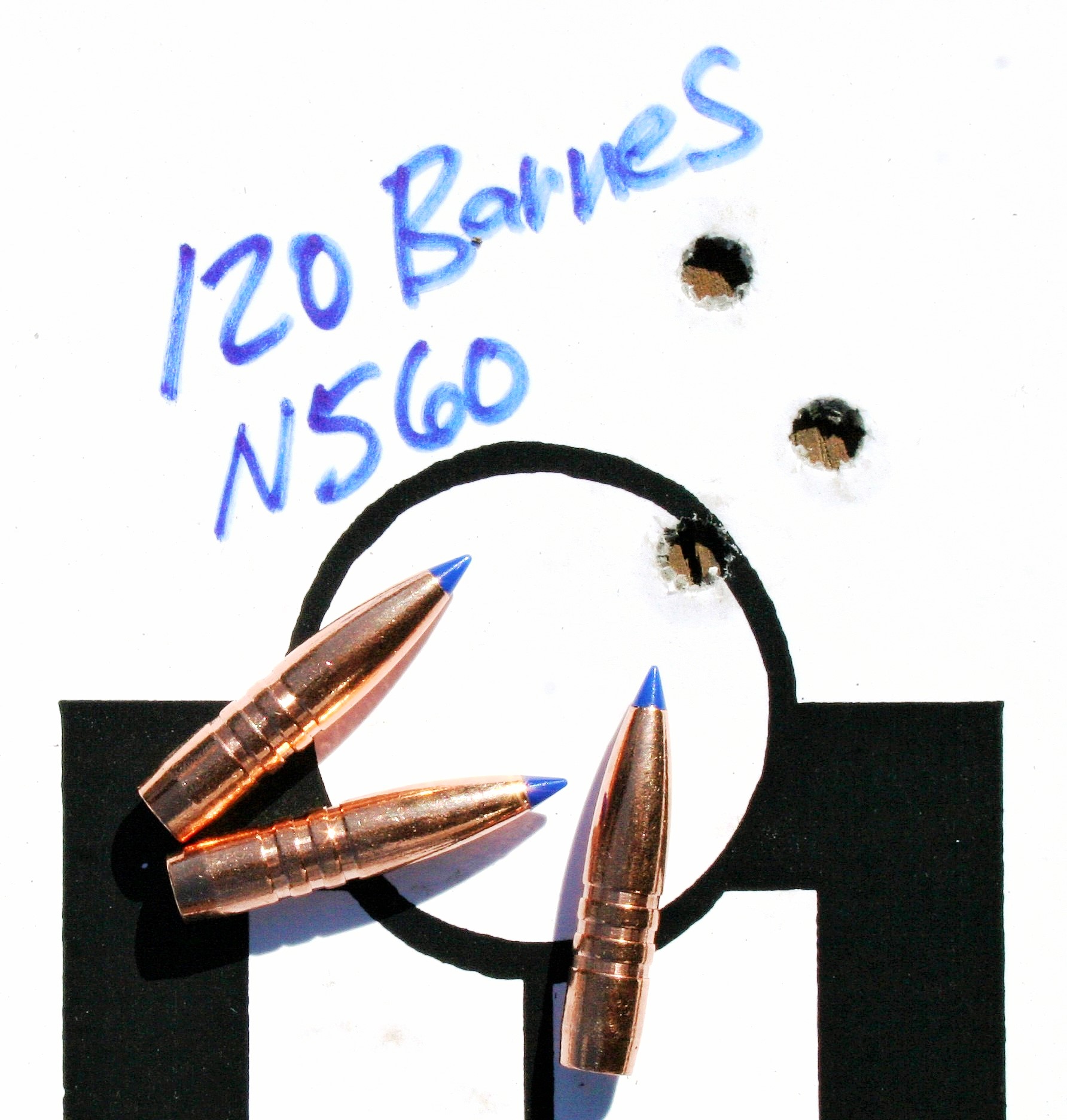
Chapter 3: Results and Recommendations
Three loads are listed as MELs (Moderate, Effective Loads) using the 95-grain Hornady V-Max with 5744 or H4198 powders. Even though this cartridge generally produces very low recoil, these loads make it a real joy to shoot. They would be an excellent choice for beginning or young shooters. The most accurate full power load with this bullet used H4895 for almost 3,180 fps. The Barnes Tipped Triple Shock X (TTSX) in 120-grains features a blue poly tip for improved velocity retention downrange. It was very accurate with IMR 4350, producing 0.91” group averages, and giving 2,728 fps. An equally accurate MEL with this bullet features IMR 4895 at 2,619 fps. Full power rounds with the 120 Barnes used N550 or 560, and H4350 for around 2,800 fps. Due to near 100% retention, this bullet could also be used on deer, boar, or even black bear.
Next up in weight, and also a good penetrator, the 125-grain Nosler Partition performed well as MELs with H4198, H4895 or H322, at very low recoil levels. Any of these three loads would be good for young hunters. The full power rounds with this bullet were able to match the speed of the slightly lighter Barnes. The Hornady 129-grain SST produced good results under MEL loads using H4198 or H4895 powders; good for practice or for hunting out to perhaps 150 yards, with very low muzzle blast or recoil. Top charges with N550 or 560 delivered around 2,700 fps from the relatively short 20” barrel of the CZ.
Perhaps a good candidate for an all-around performer, the 130-grain Barnes TSX shoots flat enough to take deer or pronghorn on the plains, sheep in the mountains, elk in a meadow, or the largest boar or black bear to be found in a dense forest. I would trust it to shoot completely though all medium game, leaving an exit wound on the far side, and a blood trail for tracking- though I would not imagine it to be a very long trail at
that. Two very accurate loads, using either H4350 or 4831SC, delivered...
consistent 3-shot groups of 0.87”, at speeds of around 2,670 fps, producing almost 2,100 ft. lb. N550 and 560 were slightly faster but not as accurate as the preceding powders.
Full power loads with slower powders, approached 2,700 fps with fairly good accuracy.
The also lead-free Lapua 140-grain Naturalis is an excellent candidate for a woods or driven hunt. A very low recoil MEL uses only 36.3 grains of H4895 to produce 2,430 fps. At close ranges, I would expect it to shoot completely through most game, while still minimizing meat damage due to its homogenous construction. A little more velocity can be realized using heavier charges of slower burning powders such as N560 or Winchester
The most accurate load tested out of over 90 combinations proved to be the Hornady 140-grain factory soft-point offering. It delivered 2,366 fps and only 0.75”, three-shot groups at 100 yards. It could be used for most any game a hunter might pursue with a 6.5mm rifle. Loads using various slow burning powders did deliver 200 ~ 275 fps with the 140-grain SST bullet, but accuracy could not approach the factory round.
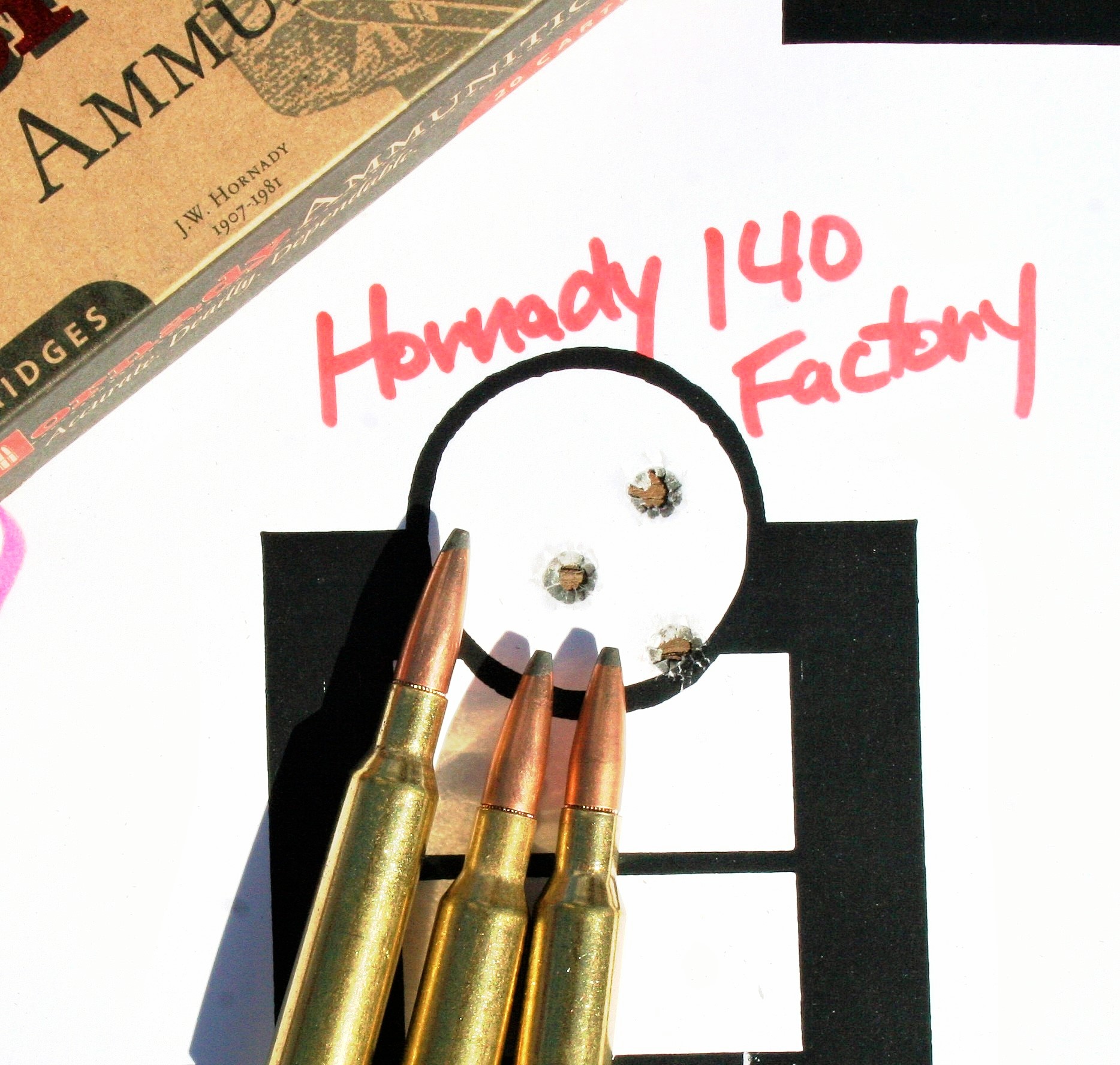
A very accurate MEL was developed using H4895 and the 140-grain Nosler Partition. This would be an excellent combination in the CZ for woods or driven hunts where shots would come fast, and exact placement could not always be assured. Full power loads with slower powders approached 2,700 fps with fairly good accuracy. Even the heaviest charge of almost 48-grains of N560 generated very moderate recoil levels. Perceived low recoil, combined with a deep penetrating bullet, results in a round that gives the hunter great confidence. The knowledge that your bullet can deeply penetrate the game is just what a hunter needs when taking to the forest.
Under the Hornady 160-grain round nosed soft point, only 34.8-grains of H4895 produces 2,261 fps. Even at this moderate speed, there is not much game in the woods that could not cleanly be harvested with this very soft shooting load. Both the low recoil and the deep penetration on game will impress the seasoned hunter. Slightly heavier charges of slower burning rate powders do...
give a little more velocity but within 100 yards or less, no game would ever know the difference. I like both the weight and the look of this very traditional bullet. Its moderate speed, even at close distances, will go a long way to minimize meat damage which could occur with a much faster, lightly constructed bullet.
Chapter 4: Summary
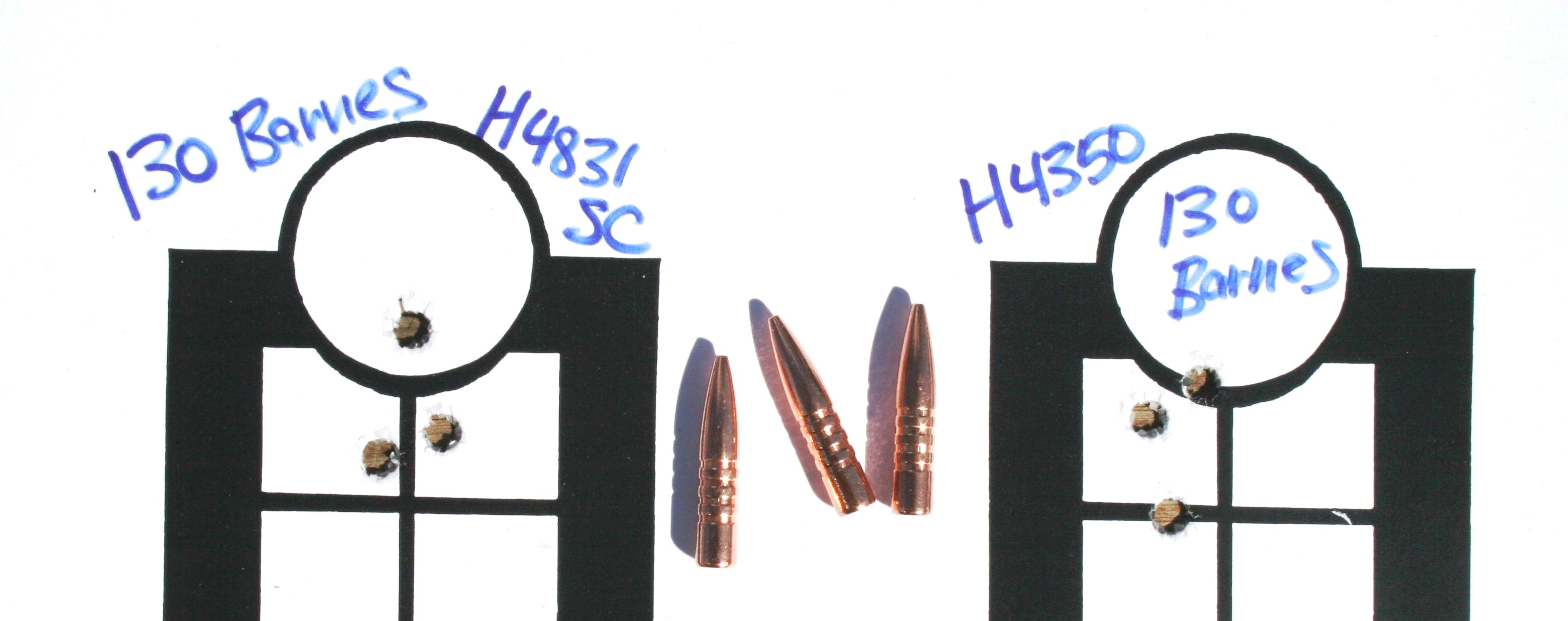
Long known for accurately shooting heavy, deep penetrating bullets at moderate speeds, the 6.5×55 earned a reputation for cleanly taking game of a surprising size with minimum recoil and blast. Its mild manner delivers great results on paper, confidence to the shooter, and very satisfying results in the field. With lighter bullets such as the 120-grain Barnes, the 125 Nosler, or 129-grain Hornady, this 6.5 caliber round can also reach out to take medium sized game at distances well past 200 yards. With even heavier bullets, it is capable of driving completely though game of a very good size.
I found the CZ carbine a joy to shoot, and the accuracy it delivered to be capable of the task most shooters would ask of it. As it does not deliver blistering speeds, meat hunters need not worry how much of the harvest will be too damaged to enjoy. This cartridge responded very well to MELs using several different bullets. Good for practice or for taking game out to moderate distances, they increase the versatility of this 6.5 even more. While I really like shooting big bores, there is no disputing that moderate calibers shooting strongly constructed bullets at moderate velocities are a lot more enjoyable to my shoulder.